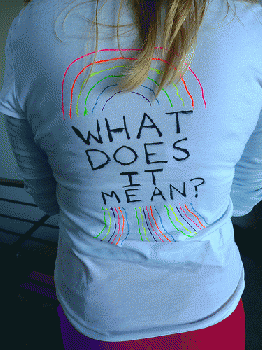Many are of the opinion that democracy could be better served if voters simply had a larger pool of candidates to select from on election day, but there is a problem. The voting system we habitually use is well-known to work poorly when there are more than just two candidates. Balanced-Voting systems do not suffer from this flaw we have argued that balanced voting systems would naturally lead to more candidates competing in elections.
We have examined a variety of balanced voting systems and even offered opinions about which is best. Of course such a judgement can be disputed. Simplicity is important, but we must consider whether it really more important than taking an accurate reading of voter sentiment? How well voters like the system is another important consideration but does it outweigh simplicity or accuracy? And how important relative to these considerations is susceptibility to corruption of the vote-count? Plurality Voting (PV) scores very well on simplicity but not well at all on these other considerations.
In the U.S., each of our fifty states, at least in theory, makes its own decisions about how elections are conducted but in this respect, states have behaved with a herd mentality. If different states used different systems, that alone might make it more difficult to game the overall electoral system when it comes to populating our federal offices.
One balanced voting system that I particularly favor is Balanced-Approval Voting (BAV). With this system of voting, each voter is asked to check, for each candidate, either the box labeled Approve or the one labeled Disapprove. Of course a voter can (and no doubt many would) choose not to check either box and possibly a few will check both boxes; either of these actions would seem to indicate ambivalence on the part of the voter so these ballots would count as a neutral preference that is given no weight in affecting the outcome of the election.
After a BAV election, the votes of all of the voters must be tallied to determine the number of Approve and the number of Disapprove votes for each candidate. The phrase, net vote, refers to the difference of these two numbers (approve minus disapprove). The winner of the election is the candidate with the largest net vote (which in each case could be positive, negative or possibly even zero).
In the weeks leading up to our elections, polling companies often study voter sentiment and they report the levels of support for at least the two candidates they judge to be the possible winners. Often though, they also report the net favorability of the candidates to reflect the level of support minus the level of opposition. This net favorability serves as an estimate of what would be measured by the net vote in an election using BAV. It is curious that although PV elections do not depend on net favorability, these numbers are considered important enough to be widely reported. Perhaps this is due to a common but unspoken realization that net favorability is really what properly reflects of voter sentiment. Nonetheless we continue using PV elections which do not measure net favorability.
Statistical theory tells us that even a fairly small sample can reasonably be expected to be a quite accurate estimate of a full count, but only so long as it is a random sample. Of course that is the rub; taking a random sample is not always so easy and to the degree that the sample fails to be random (i.e., to the degree that some in the sampled set have a greater chance of being sampled than others) then the result from the poll will be inaccurate.
Our elections themselves actually are polls; citizens are polled to determine their opinions and in theory every citizen gets to vote. But in practice, though the sampling on election day falls well short of being a random sample and for that reason it does not really measure citizen opinion. The litany of reasons that the sample is not random is a familiar one. Gerrymandering is one serious defect and, especially in poor neighborhoods, the lines are long and people who have jobs often cannot stay the many hours it takes to vote. Especially in poor neighborhoods old voting machines break down and malfunction so votes are lost. And of course there is active partisan manipulation of the voting rolls. About the best we can hope for is that elections take a measure the opinions of voters, not those of citizens at large. This discrepancy displays a significant rift between our elections and the ideal of what a democratic election should be.
One possible objection to BAV (or even of Approval Voting) is that it would be tedious for a voter to enter his opinions about all of the candidates. This seems a silly objection when there are only three or four candidates but if that list of candidates should grow to twenty or more it begins to seem a legitimate concern. One of the systems that was proposed in an earlier article, Balanced-Ration Votin g did deal in one way with this problem, but we can now consider another alternative that actually makes voting as easy for the voter as seems possible. It turns out that taking a random sample to determine net favorability of the candidates among the voters is not so difficult.
Each voter picks up a sealed ballot and on opening it finds only one candidate listed -- which candidate is simply a surprise to the voter. The voter has only to check Approve or Disapprove for that one candidate (and of course the voter has the option of checking neither or both of those boxes). Not all voters get the same ballot, but each voter has exactly the same chance of receiving a ballot listing one candidate as receiving a ballot for any other candidate. Let's call this system, Balanced-Randomized Voting (BRV).
In its favor, BRV makes voting a simple matter for the voter and since (so long as there are a large number of voters) BRV provides a quite large random sample of voter opinions about each candidate. BRV and BAV provide essentially the same information. But compared to BAV, many fewer votes need to be counted with BRV. Whether voters would be comfortable with this statistical approach to voting can be debated. While voters may find voting a much easier activity, an individual voter is likely to be denied the opportunity to express her feelings about the candidate that is most important to her. Added to that, some voters will just not believe that statistical measurements can be trusted. But even if BRV is never put into practice, it is a revealing exercise to consider how it compares to other systems of voting.
While BRV and BAV provide the same information about voter opinion, from the perspective of a voter BRV is more similar to Balanced-Plurality Voting (BPV). BPV was the very first example of Balanced Voting (but since then, renamed) to be described in this series of articles. As with BRV, a voter in a BPV election expresses an opinion about just a single candidate. However, with BPV, the voter chooses that candidate whereas with BRV the candidate is assigned to the voter randomly.
How voters choose a candidate, either in the case of PV or in the case of BPV, is a little mysterious. With PV some people assert that it should be the candidate the voter likes most and this seems sensible since with PV the voter's only option is to vote for the chosen candidate. But we know that the choice that voters make is often on some other obscure basis that at least in some measure takes account of the viability of the candidates. With BPV, the voter is instructed to choose on the basis of which candidate is most important to the voter, but no doubt the candidate's perceived chances of winning again would likewise enter into evaluating importance. In contrast, with either BAV or BRV the voter is not faced with making that often difficult "which candidate?" decision.
Also with BAV or BRV, there is no trouble interpreting the voting results. In both cases the election reflects the net approval ratings of the candidates according to the voters. But with PV or even BPV it is pretty hard to say what exactly the vote means beyond who won election. The obscure process that voters use to select just one candidate no doubt varies from voter to voter and that makes it more than a bit perplexing to interpret what the results could possibly mean.






